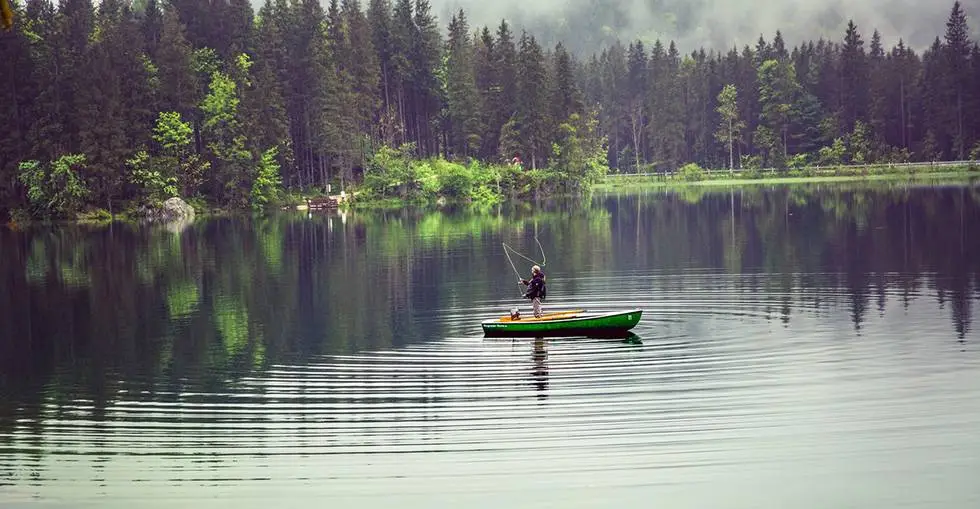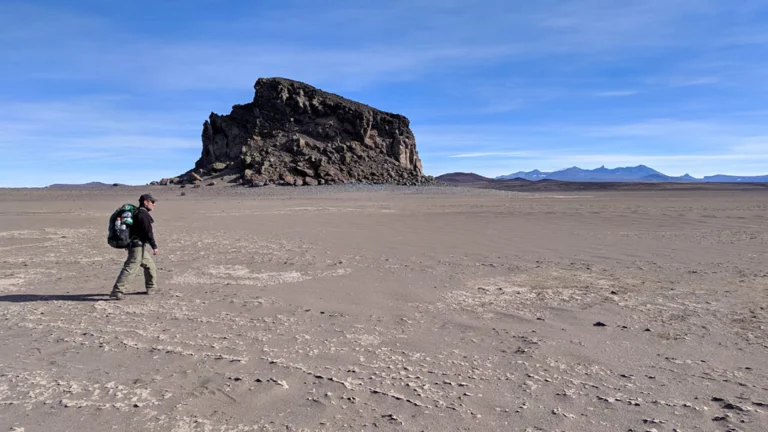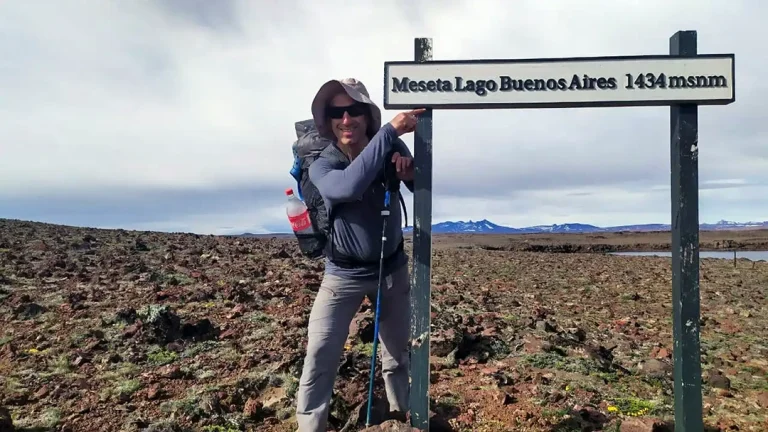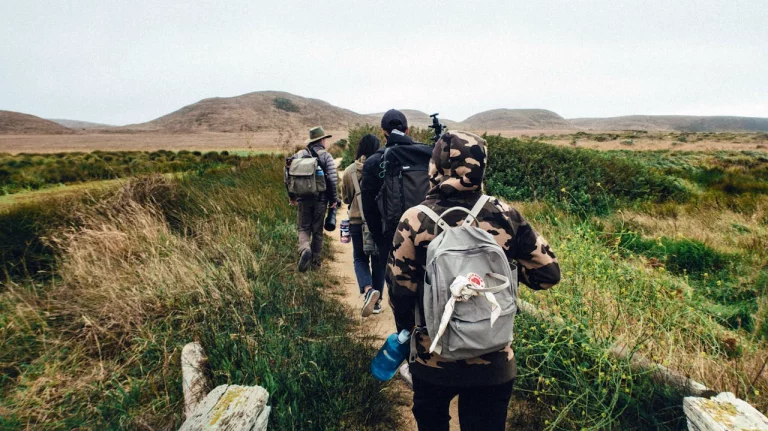Discover the best destinations for Sport Fishing in Patagonia Argentina. Get to know the outstanding species, the fishing modalities and the ideal seasons for each region.
With great development in the area of services for the angler and a wide range of options. You can choose between the steppe or the Patagonian Andean forest, each with well-defined characteristics and the excellent quality of wild trout. We tell you about the characteristics of the different fishing areas, the varieties found and the Patagonian continental sport fishing regulations.
An excellent advantage of the low population density of the mountain range area is that it guarantees to find unique and little visited environments. The most common species are: Rainbow Trout, Brown Trout, Landlocked Salmon and Brook Trout.
Rainbow and Brown, are the varieties of trout that in the first two months of the beginning of the season return to the lakes due to the high flows of the rivers and streams. The possibilities of obtaining a good trophy are really great. The mornings and nights are very cold, it occasionally rains and the temperature ranges between 4ºC and 27ºC.
In summer (January and February) the temperature oscillates between 15ºC and 32ºC. The climate is very pleasant and rainfall is scarce. These long days with perfectly wadeable rivers are times of dry fly, caddis and may fly hatches that keep the trout active all the time.
March and April, the end of the season, is the quietest and most picturesque time of the year, with the combination of red, green and yellow on the mountains and riverbanks. Low water levels invite you to use light tackle to catch those big Rainbow and Brown trout that move from the lake to the river to spawn. During this time of year you can usually fish the most popular rivers without seeing another angler for days. Temperatures range from 7ºC to 20ºC.
Different fishing areas in Patagonia
Among the main environments, the Lago Puelo National Park stands out, with a beautiful lake that gives it its name and is its main attraction. It is populated by Rainbow Trout, Brown Trout and Brook Trout, being the Rainbow Trout the most populated. Its main tributaries for fishing are the Azul River, the Turbio River, the Epuyén River and its outlet, the Puelo River. Lake Epuyén is a beautiful water mirror where it is possible to find Rainbows of good size.
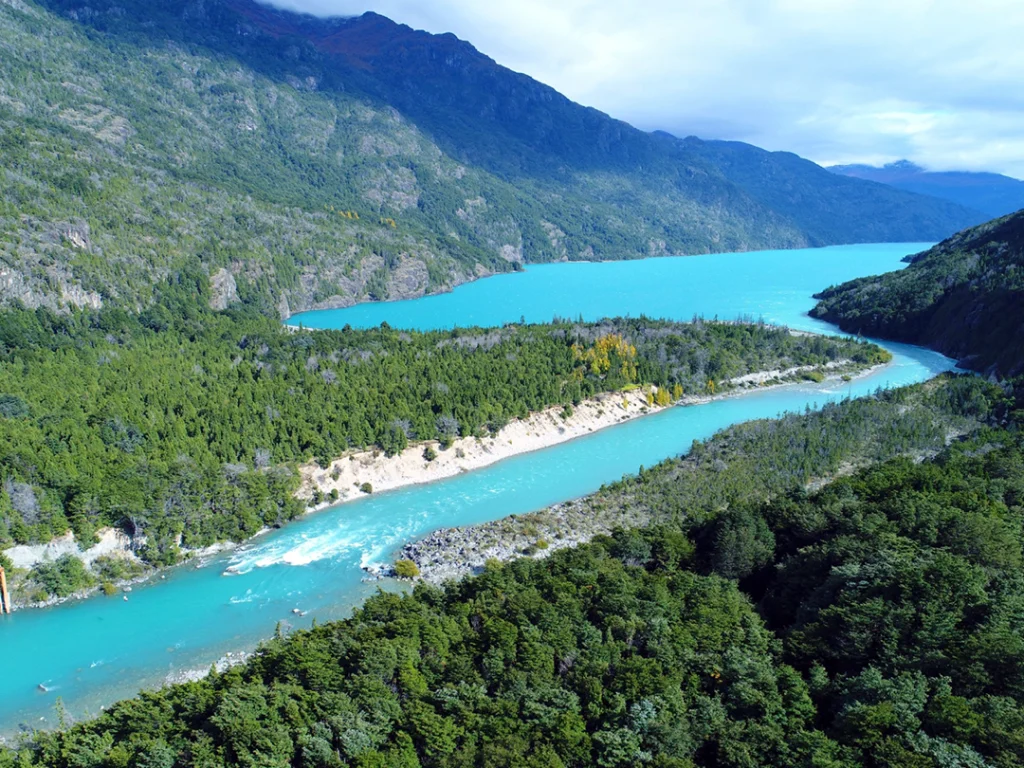
The Chubut River is low water, gravel bottom and very populated with fish, of course as in all the rivers of Patagonia, its flow changes according to the season. At the beginning of the summer it has a great flow due to the thaws, and then it decreases considerably in autumn. Lake Cholila is the area where the coveted landlocked salmon migrate. Its main tributary is the Tigre River, with milky waters but yielding at the time of fishing salmon. The Carrileufu River is a beautiful river to float until it reaches Lake Rivadavia.
In Los Alerces National Park, the exuberance of the landscape is complemented by fishing of various species, size and action. It starts at Lake Rivadavia. The Rivadavia River joins it to the Verde Lake, which drains through the beautiful Arrayanes River, and a few meters from its source it receives the waters of the Menéndez River, to later flow into the Futaláufquen Lake. The latter communicates with Lake Krugger, receives the waters of the Stange River, and drains through the Frey River to the Amutui Quimei dam. Here the Futaleufú River is born, which enters Chilean territory. The Menéndez Lake and the Larga and El Martillo lagoons complete this system, making this National Park a fishery of excellence.
In this area we find the world famous spring creek Arroyo Pescado, as well as the Chubut, Gualjaina, Corintos and the Nant and Fall Rivers, which originate in Lago Rosario. Numerous lagoons such as Willmanco, La Zeta, Esquel and others, offer a wide variety of alternatives for sport fishing in Patagonia.
The Rio Pico and Corcovado areas are probably the best for trout fishing in all Patagonia. The upper stretch of the Corcovado River and its mouth at Lake Vintter offer catches of large Rainbows and Brook Trout, the latter with the largest contributions worldwide. Other rivers, the Nilson and the Pico, allow wading with dry flies and nymphs due to their perfect flow and current. The Del Engaño lakes should also be mentioned. Los Niños and the lakes Nº1, Nº3, Nº4 and Nº5, which complete an offer of high international quality.
La Plata Lake is undoubtedly one of the most beautiful lake mirrors in the Chubut mountain range, with enclosed bays and a majestic lenga forest. A great number of streams reach this water mirror, turning these drains into very good fishing sites. The dominant species in this area is the Fontinalis, and to a lesser extent, the Rainbow Trout. The Union River connects Lake La Plata with Lake Fontana in a short but interesting route for the angler. Lake Fontana drains through the Senguer River, which from its source in the lake enters the Patagonian steppe, offering the most varied fishing characteristics.
Different modalities: Belly-boat
It is an excellent auxiliary of the sport fisherman that gains followers in the lakes of the mountain range, the belly-boat is a camera of great rolling that adapts with a harness, as if it were a walker to receive a person. In this way, you can float anywhere, especially when you do not have several meters on your back to move freely.
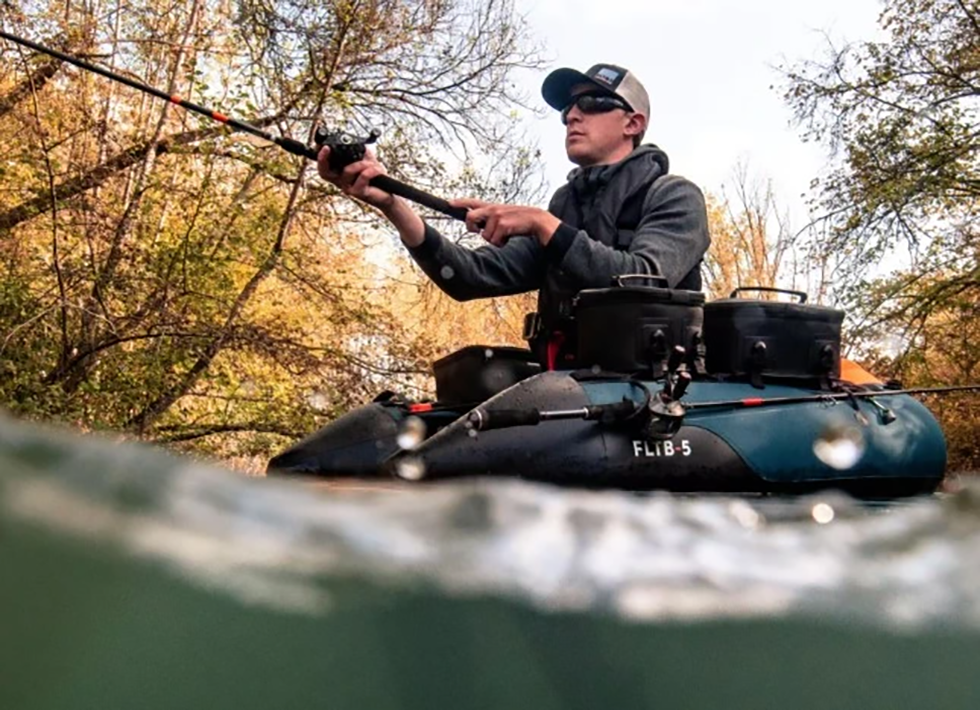
Some anglers prefer this method because it is quieter and more maneuverable than any type of boat. In addition, it is more of exercise, since the fisherman must propel himself using frog legs that adapt to the boots. In addition, it can be carried on the back, like a backpack, to the place chosen for fishing. There are different models with some details to make the long hours spent on the water more pleasant.
Fly casting
Fly fishing in Patagonia requires specific skills, both for the casting of the lure and for its preparation. The lure is called a fly because it imitates the insects that fish feed on. With feathers, threads, animal hairs and metal parts, flies of many different shapes and colors are tied on a simple hook.
Fly tying is an art in itself. Each fly is given a name, conferred by its creator. There are flies that work submerged, the wet ones, and flies that float on the surface, the dry ones. Fly tiers often make their own lures and there are schools and courses for fly tying and casting.
The fly is an artificial lure with a light weight. Therefore, in order to be cast, the fly line, formerly called mouse tail, has to be weighted. Its thickness varies in its extension: it is thicker in the first section, in order to facilitate casting. A leader is tied at its front end, a stretch of transparent nylon whose diameter is also different at the two ends: the fly line is attached to the thicker part and the tippet is knotted at the thinner part, to tie the fly to the tippet.
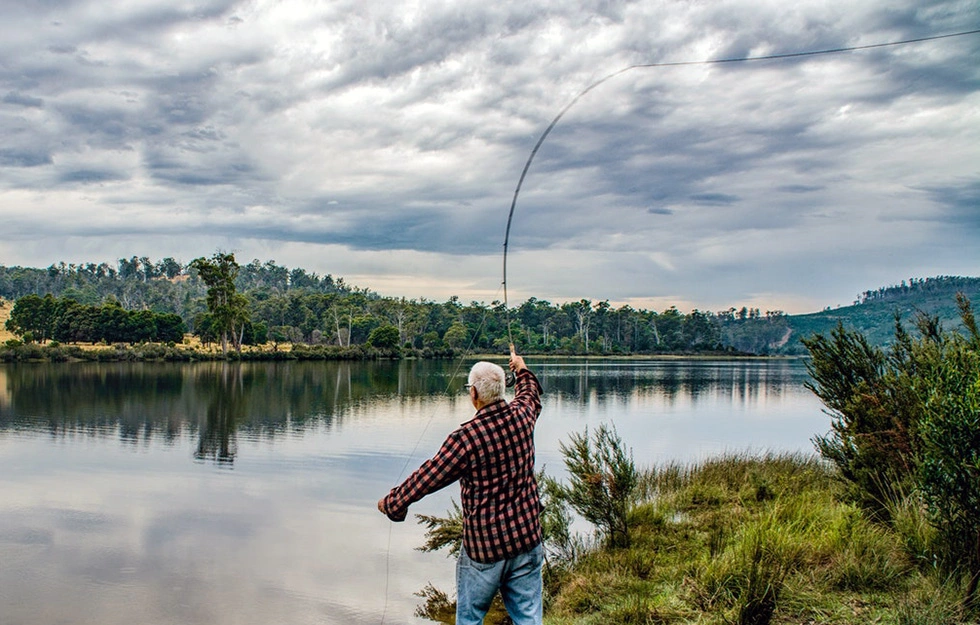
For the act of casting, the angler enters the water and needs to have enough space in front and behind. When this space is not available, it is necessary to use special casts in order to achieve the objective.
Catch & Release
With a more naturalistic orientation, the desire to hoard fish that guided the old anglers is being abandoned. Today, the sport fisherman tries to be an integral part of nature, with a greater knowledge of the environment in which the fish lives and a more ecological criterion. In tune with this trend, catch & release has become an increasingly popular practice, having as its main objective the rational management of fishing, and therefore, it should be included as a mandatory modality in fishing regulations. Some followers of this practice argue that a trout is too valuable an animal to be fished only once, and take it as an attitude of the highest sporting ethics to respect its life and return it to the water. Others think that it is unethical and unsportsmanlike to have fun making an animal suffer by hooking it, exhausting and stressing it, and then returning it to the water with the possibility of its death. Finally, there are those who think that fishing is not complete until the trout is eaten.
Regardless of the angler’s thinking, it is very important to practice it correctly, in order for it to be effective, one must accept the fact that when catching a fish with a hook, it will cause damage of greater or lesser severity and also, despite the opinions that fish do not feel pain in the same way as other “higher” organisms, it causes trauma and high stress.
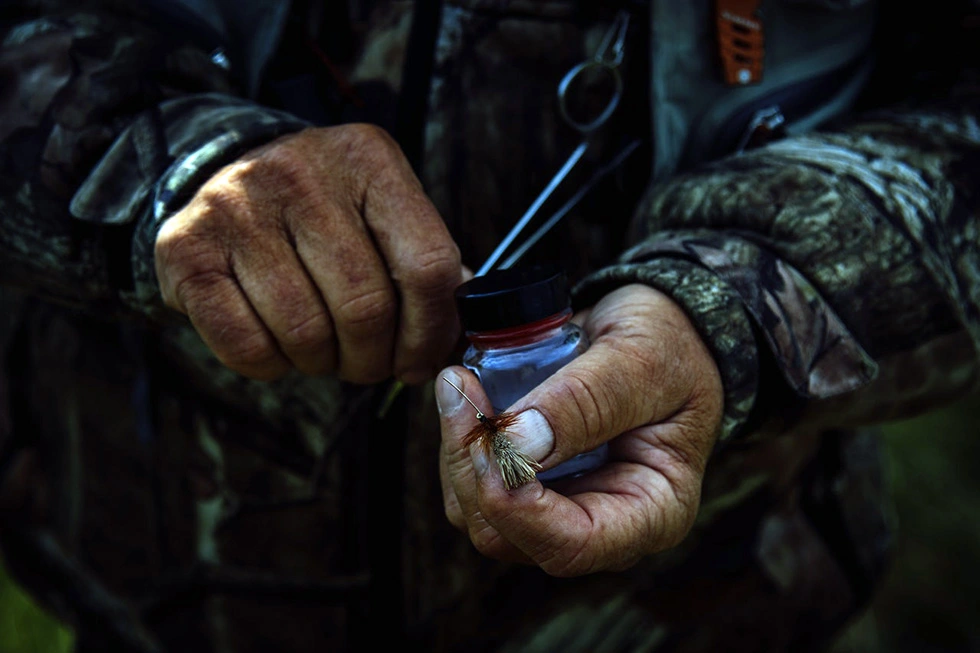
To return fish with the best guarantee that they will survive after release, the following should be considered:
Release the fish as quickly as possible. The time it takes to fight should be short, so that it can recover later. Always keep it in the water. Avoid hitting it on the ground or against rocks. Treat it delicately, careful handling is essential, do not squeeze smaller fish and hold them by the lower jaw. Soft fabric nets should be used and try not to snag the gills. Try to extract the hook as quickly as possible.
If the hook is deeply hooked, it is preferable not to remove it and to cut the line. Release the fish in an area of gentle current, so that it is not dragged but there is sufficient water renewal. If the fish, after being released, does not recover, it should be held with its mouth open in front of a more or less strong current, allowing the water to flow between the gills. This operation may take several minutes. Then, release it following the advice given above.
Rainbow Trout | Trucha Arcoiris | Oncorhynchus mykiss
It is a species of great sporting value, very powerful and combative; it attacks all types of artificial lures, many times even for non-food purposes. It populates almost all the favorable environments of Neuquén (streams, rivers, lagoons and lakes) and is widely used for industrial breeding all over the world due to its adaptability to handling, high density conditions, artificial feeding and for withstanding higher temperatures and less oxygenated waters than other salmonids. The variety known as steelhead is anadromous, breeds in freshwater and then migrates to the sea; fish that are commonly known as steelhead but live exclusively in freshwater have some ancestor of that migratory variety. There are also migratory varieties of this species that receive different common names, especially in English. In natural environments, individuals attacked by parasites are usually observed, especially of the vermiform type, with a disproportionately thin body and generally darker coloration. In lakes, rainbow trout usually present an almost spotless coloration with almost non-existent reddish longitudinal stripes (outside the breeding season), known as “silversides”.
Rainbow trout can generate hybrids with brown trout, usually by human-induced fertilization. The resulting, infertile fish are known in English as “Browhbow” and have a profusely spotted body with not very large, irregular spots, which also extend over the dorsal and caudal fins; these spots are larger and less dark than those found in rainbow trout. It feeds mainly on insects (larvae and adults, aquatic and terrestrial), mollusks, crustaceans, fish. Especially in ponds and under certain circumstances in the wild it is cannibalistic. It tends to greedily attack small objects moving in the water.
Brook trout | Trucha de arroyo | Salvelinus fontinalis
It is a species of great sporting value that attacks all types of artificial lures, many times even for non-food purposes. Despite its common name of brook trout and that in its area of origin it lives especially in waters with strong currents, in Neuquén it is more common in lakes and some rivers. It prefers cold and well oxygenated waters. The brook trout produces hybrids with the brown trout and with the American lake trout (Salvelinus namaycush), generally by human-induced fertilization. With brown trout it produces specimens known as “tiger trout” because of their coloration pattern, which has noticeable light and dark stripes that irregularly furrow the entire body, including the dorsal fin; their pectoral, ventral and anal fins have a white band along the anterior edge. When eggs from female American lake trout are fertilized with sperm from male brook trout, hybrids known as “Splake” are obtained, which are fertile and can reproduce naturally. They have been planted in some bodies of water in Canada. Its body is generally dark very profusely dotted with light spots and its back is vermiculated in appearance; its fins are dark with a noticeable white band on the anterior edge. It feeds mainly on insects (aquatic and terrestrial larvae and adults), crustaceans and fish.
Brown trout |Trucha marrón | Salmo trutta
It is a species of great sporting value, very powerful and combative; it attacks all types of artificial lures, many times even for non-food purposes. It is not as abundant as the rainbow trout although it is found in many streams, rivers and lakes of Neuquén. In general, it does not tolerate as high temperatures as the former, but it adapts very well to artificial spawning and fertilization, in subspecies such as the “fario” form in rivers and streams, the “lacustris” form in lakes and another called “marmórea”. There is also a migratory variety that lives in the sea and returns to fresh water to reproduce; originally from Iceland and northern Europe, it has been introduced in several countries of the world; in Argentina it was introduced in Tierra del Fuego; these trout have a rapid growth in the sea and their coloration is lighter and silvery; in Europe they can reach great size (approximately 15 kg on average, with exceptions of up to 35 kg). Their diet consists of aquatic and terrestrial insects, crustaceans, fish and other aquatic organisms. Larger individuals are large consumers of fish and some small birds and rodents have also been found in their stomachs.
In conclusion
With its crystalline rivers, crystal clear lakes and abundant trout and salmon, Patagonia Argentina is a dream destination for fishing enthusiasts. With its turquoise lakes, thawing rivers and ancient forests, Los Alerces National Park is a paradise for sport fishing in Patagonia Argentina. Its waters, rich in rainbow, brown and fontinalis trout, offer a unique experience in dreamlike settings. From excursions with expert guides to breathtaking landscapes, Sport Fishing in Patagonia Argentina combines adventure, nature and first class fishing, making it a must for any enthusiast.

